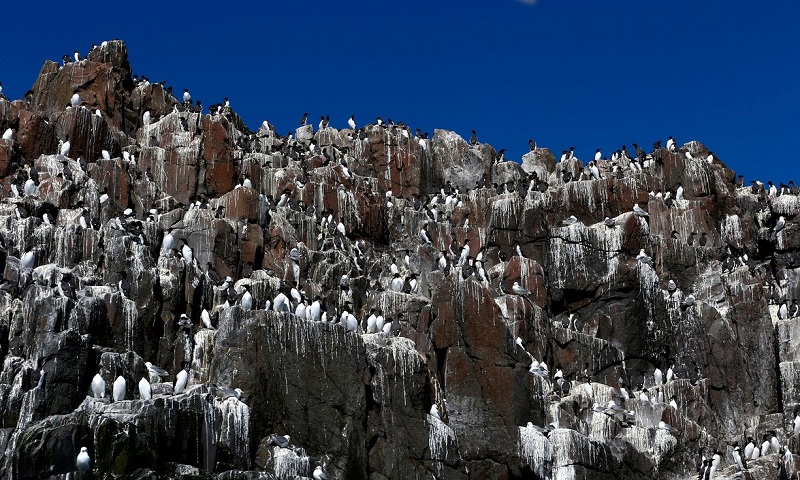We must stop seabird numbers falling off a cliff. After all, we’re to blame

About 70,000 tonnes of seabird are now afloat or on the wing off the shores of the British Isles. This biomass – roughly the same as Salisbury Cathedral – is made up entirely of thinking, fishing, hunting, flirting, fighting, flying, diving and feathered beauty: 8 million breeders, several million more adolescents and, by the end of the summer, armies of chicks. Perhaps 15 million creatures in all. After 60 million years of extreme living, seabirds are crashing. They are here for sex, and the raising of the next generation. Eggs can’t be laid on the sea; bird embryos breathe air through the shell and would suffocate in water. Every coastal culture on Earth has evolved a double attitude to seabirds – using and loving them, nurturing and killing them, experimenting with them and selling them, looking at them with awe and making toys, hats and dinner out of them. They were never merely walking or flying larders but, as the archaeologists Marcus Brittain and Nick Overton have called them, “participants in life”, fellow beings, co-actors in the drama and struggle of existence. Stillborn children were buried on the wings of whooper swans in Mesolithic Denmark. At Isbister in Orkney, more than 600 sea eagle bones were mixed in with human remains in a bronze age tomb. In Shetland shepherds used to feed titbits to the bonxies – great skuas – that protected their lambs from sea eagles and ravens. Even now, Hebridean fishermen keep seagulls as pets in their gardens beyond the kitchen door. For generations, their mystery and power has been in their ability to come and go beyond any horizon. Now, thanks to technology – almost entirely fuelled by the miniaturisation drive of the mobile phone industry – we know what these birds do when beyond that horizon: wandering albatrosses sail five million miles in a lifetime’s voyaging around the Southern Ocean; each puffin holds within its mind a map of the North Atlantic, tracking across it to the same unmarked parts year after year; shearwaters smell their way around their 20,000-mile migrations from northern nest sites to southern fishing grounds in a two-hemisphere life of unbroken summer. But just as science is coming to understand the seabirds, we are destroying them. By one measure, in the past 60 years they have declined by two thirds, from about 1.5 billion to something like 500 million. The extension of the graph into the future reaches zero in about 2060. That won’t happen – the seabird phenomenon is too complex, with too many unknowns and local variations. But a disaster is unfolding, and it is one we have brought on ourselves: through overfishing; the massive accidental catching of birds in fishing gear; their deliberate destruction; introducing rats, cats, dogs, pigs, goats, rabbits and cattle to the breeding places of birds that are defenceless because they did not evolve with the introduced species (many Pacific birds literally cannot smell a rat); pollution by oil, metals, plastics and other toxins; the recently discovered fact that plastic that has long been floating in the ocean comes to smell like food, so 90% of all seabirds are now found to have plastic in their stomachs; the destruction of nesting sites by human development; and the multiple effects of climate change and the acidification of the sea.

